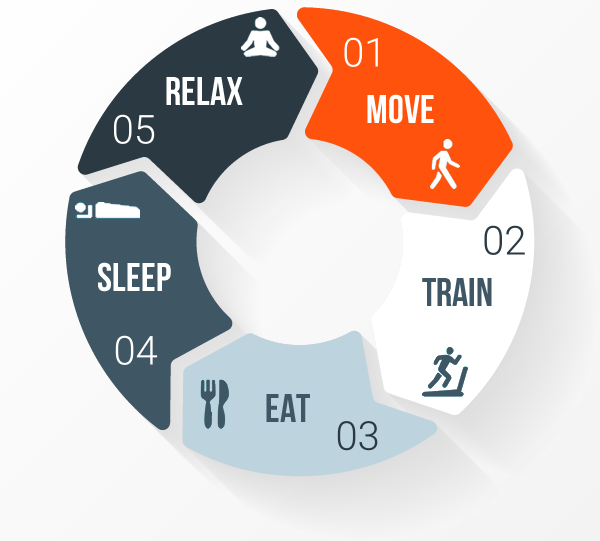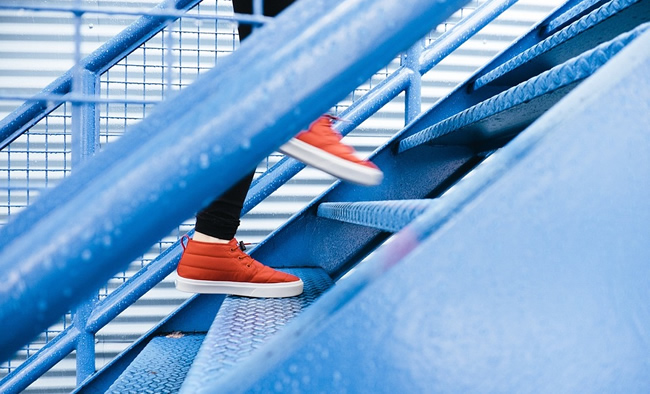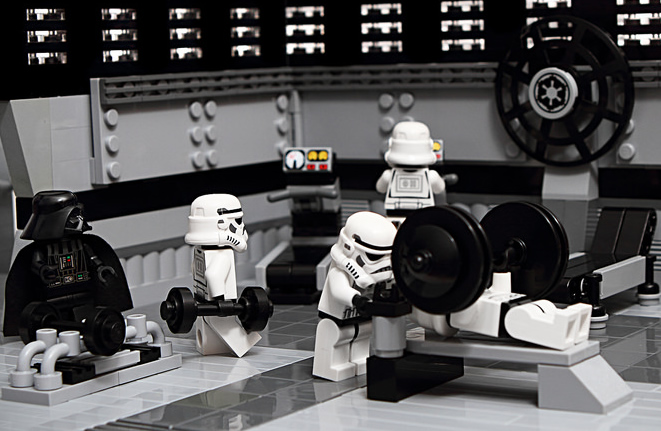
Over the last few weeks, I’ve introduced you to a whole new way of looking at fitness. One that’s focused not just on blind intensity, but on recovery. Along the way, I’ve talked about Why our High-Intensity obsession has failed us, shown you How to use a specific type of training to recovery faster than ever and the discussed the truth about Why cutting calories just doesn’t cut it.
Since the first article, I’ve received literally hundreds of emails and thousands of shares from people all over the world that have come to the same conclusion I have: the current model of fitness is broken. They shared their personal stories of burnout and frustration from putting in endless hours of training and not seeing the results.
It’s clear that millions of people have tried adding more intensity, cutting more calories and doing what the experts told them they should be doing, only to be left fatigued, defeated and confused about why doing more didn’t work. They bought into the hype, put in the work and not only did their fitness not improve, in a lot of cases, their health actually got worse.
When I finally revealed the answer and explained the science of why more is often worse instead of better, people almost seemed relieved to find out it wasn’t just them. For the first time, they understood why all their hard work had driven them into a recovery debt and left them without the results they had been looking for.
Now that I’ve helped people realize that the current system of fitness is broken and a new mindset built around recovery is needed, the next step is to talk about how to put all the pieces together. As with any puzzle, you can have all the right pieces but if you don’t put them together properly, you just end up with a mess.
How to finally achieve your goals: Focus on the process of being healthy each and every day
Whenever someone talks about why they’re training or following a particular diet, the discussion inevitably revolves around a particular goal they want to achieve. Maybe they want to drop some extra fat, maybe they want to get bigger and stronger, or perhaps they’re trying to make the team, or just prolong their career and stay at the top of their game.
Regardless of which it may be, I’ve come to see that there are really only two big reasons why most people ultimately fail to reach them. First and most importantly, they are starting with the wrong mindset, the intensity-driven mindset, that I’ve thoroughly covered.
Second, people are often unable to put together the pieces of the fitness puzzle so that they all work in unison to drive progress. This is because what’s missing is the understanding that literally everything in your daily life comes down to energy.
How much you move, how hard you train, what foods you eat (or don’t eat), how much you sleep… every aspect of our daily lives is connected to energy. The only way to truly reach your fitness goals to embrace this concept and build your daily habits, your personal routine, your training program and your nutrition around living a recovery-driven lifestyle.
The Recovery-Driven Lifestyle

Living a recovery-driven lifestyle means that each day, you connect all the dots and focus on the fitness process and being healthy. Instead of feeling like you have to sweat it out at the gym after a long, frustrating day at work, you realize that you’re better off targeting recovery rather than crushing yourself with high intensity.
After a couple nights of poor sleep, you decide to increase calories the next day rather than cutting them back even more, in order to keep burning fat. You take the elevator instead of the stairs because you’d rather spend your precious energy on your workout than aimlessly racking up steps.
What it all comes down to is ensuring that your lifestyle and daily habits are in line with how your body is designed to work. When you build each day around moving, eating, training, sleep and relaxing, you accelerate recovery rather than just fatigue. This is the real key to connecting all the dots of life in a way that will improve both your fitness and your health, so you can finally reach your goals.
Move to accelerate recovery, not just to burn calories

Each year, Fitbit and other wearable companies sell millions of activity trackers with the idea that moving at least 10,000 steps a day is the key to health and weight loss. This may very well be sound guidance for someone who primarily moves between the couch and an office cubicle.
However, if you’re already active and spend more time in the gym than in front of a TV, this is the wrong message. The idea that more activity is always better feeds into the intensity-driven mindset and, more often than not, it turns your daily step count into a contest against yourself.
The problem with this approach is that the more you move, the more calories you expend. If you go above a certain threshold of energy expenditure, you slow down recovery more than anything else. This is because of the limited nature how many calories your metabolism can convert to energy in a day – an important concept I discussed thoroughly in Why our obsession with high-intensity training has failed us all.
Recovery-driven fitness starts with the understanding that managing energy properly is the most important thing we can do. Practicing “proper” energy management will mean something different for each person.
- You’re not average—so why is your daily activity? While movement promotes blood flow—largely through the skeletal muscle pump—to facilitate recovery, too much of a positive thing can be negative. Forget the 10,0000 steps a day rule, because A) there is very little science to support it and B) the truth is that everyone is different. If you’re 250 lbs, you’re going to burn a lot more calories moving around than someone that’s only 130 lbs.
The idea that everyone should move the same amount is like saying that everyone should follow the exact same training program and diet.
You should use activity tracking to find the amount of daily activity that’s best for you.Make it your goal to move enough to promote recovery, not just to take as many steps or burn as many calories as possible.
Train to recover and watch your fitness improve

Even Stormtroopers have to balance their training with recovery if they want to fill out their armor.
There’s no doubt that high-intensity training is both a necessary and effective tool for improving fitness. Yet when it’s the only tool in your arsenal, it becomes more like a weapon for self-destruction.
The reason high-intensity is so powerful is that it’s tremendously stressful. This stress signals the body to become bigger, stronger, more powerful and better conditioned. In order for all these things to happen, however, your body has to be able to recover. When the amount of stress exceeds your ability to recover, you create a recovery debt.
Do this long enough and, sooner or later, your body will fight back. The key to making continuous progress and avoiding this backlash is to have more than one tool in your training toolbox.
Instead of going into the gym every day with only one way to train, it’s important to add a new type of training into your program - one that will speed up your recovery rather than slow it down. Training doesn’t have to just be a way to break your body down. It can also be a powerful tool to develop the skill of recovery and help you get the most out of your training.
- Add High-Performance Recovery Training (HPRT) into your weekly schedule. HPRT is an invaluable way to help shift your body into the recovery state (in case you missed it, I gave the proper HPRT protocol in my article on How to train to recover faster than ever). The only time your recovery is truly optimized and your hard work turns into results is when your body is in the recovery state.
Although HPRT sessions can be used anytime, the most effective way to incorporate them is the day after a high-intensity session. Not only can doing this on a regular basis help speed up recovery, it can also help improve conditioning and movement quality. This is particularly true when you use recovery zone intervals, a particularly effective method for shifting the body into the recovery state and developing the skill of recovery.
Remember, recovery is where the true magic of fitness happens and it’s a skill that can be developed with the right training. HPRT is your opportunity to accelerate recovery and make sure you’re doing everything possible to get the most out of all your hard work, rather than sitting around and waiting for it to happen. If you haven’t tried HPRT or recovery-zone intervals yet, you can get a free sample workout in this article.
You can’t fight your biology. Dopamine always wins.

Every year, Americans spend over 20 billion dollars trying to lose weight. The result? Over the last 20 years, the obesity rate has nearly doubled, jumping from 19% to more than 35%.
Clearly, the current approach to nutrition and cutting calories doesn’t work. It goes against our own biology. Although we’re designed to store calories as fat, glycogen, and proteins so we can survive periods of reduced caloric intake (famine), our brains are hardwired to do everything possible to drive us to eat and avoid extended periods of reduced calories.
The more we cut calories, the more our bodies fight back and try to get us to eat more and move less. It does this through dopamine, a powerful hormone that drives behaviors that maintain energy homeostasis. When you add high-intensity training and mental stress on top of a low-calorie diet, you’re setting yourself up for failure from the beginning.
The key to winning the war on fat is to take a different approach and stop fighting against your biology.
- Never mix high-intensity with high stress and low calories. Although most people think they need to move more and eat less, starting with drastically cutting calories, this only promotes a yo-yo pattern of weight cycling. Weight drops for a time, but sooner or later, inflammation increases, cortisol skyrockets, and dopamine drives hunger past the point of no return.
The key to sustainable weight loss is to avoid drastic calorie cuts, particularly on high-intensity training days. The stress of training combined the stress of crash dieting is the perfect recipe for a recovery debt. A much smarter approach, one that doesn’t fight against your biology, is to only reduce calories below maintenance levels on days devoted to HPRT or total rest.
Your body is much less likely to fight back when you only reduce calories during lower stress periods. In other words, eat more when you move more and eat less when you move less. Working with your body, rather than against it, is the fastest and healthiest approach to burning fat and reaching your body composition goals. You can download an example of how I recently dropped a few extra lbs of fat myself from this article.
Sleep: your best friend or your worst nightmare

When you do the math, you’ll quickly realize that roughly a third of your entire life will be (or at least should be) spent sleeping. If you live an average lifespan and hit 75 years, you’ll have spent over 9,000 days–that’s literally 25 years–sleeping.
Knowing this, it should be obvious just how crucial sleep is to both your health and your fitness. The primary reason sleep is so important is because it’s vital to ensuring your body can recover from both the stress of training and life. This is why a variety of research has linked chronic sleep deprivation to increased body fat, higher risks of stroke and cardiovascular disease, and reduced longevity.
The primary way that lack of sleep can sabotage your fitness is through its impact on the autonomic nervous system. Chronic sleep deprivation has been shown to lead to decreased heart rate variability (HRV), not just at night, but throughout the day. This means it can severely impair your ability to shift into the recovery state and see the full benefits of your training, which requires an increase in HRV.
Ironically, it’s often the combination of too much intensity, too much life stress, and too many stimulants (caffeine) that leads to poor sleep quality in the first place. Getting yourself into a recovery debt leads to worse sleep, and worse sleep slows recovery even further. This is a vicious cycle that far too many people get stuck in, but you don’t have to.
- Reduce stress and stimulants. Learn to unplug at night. Although there are endless strategies that people use to try to improve their sleep, the most important place to start is by understanding that poor sleep is most often connected to too much stress and too much stimulation throughout the day.
Anytime you are activating the stress response, whether it’s because of high-intensity training, the stress of life, or because you’re living on coffee, it drives up activation of the sympathetic nervous system. When this happens, energy-increasing hormones flood into your bloodstream and keep you awake.
While this is great if you need to do a workout, it’s not so beneficial if you need to get to sleep. The easiest way to improve sleep quality is to avoid all stimulants later in the day. If you happen to workout in the evenings, make sure you finish with a recovery-driven cool down (you can download an example of what that looks like from this article). The more you reduce evening stress and stimulants and learn to unplug and relax at night, the faster you’ll get to the sleep and the more your recovery will improve.
Learn how to find your off switch and relax
If there’s one thing I’ve learned after working with hundreds of people from all walks of life and collecting over 1.5 million HRV readings, it’s that mental stress impacts fitness–a lot. Again, this can be traced back to energy. When you’re dealing with the stress of life, you’re diverting energy away from recovery. When you do this for hours or days on end, the effects quickly add up.
To see what I mean, look at this study that examined the effects of life stress on strength gains during a 12-week training program. As you can see in the graph below, the high-stress group gained significantly less strength, as well as less muscle mass, when compared to the low-stress group. If you were to add these differences up over the course of an entire year of training, it’s easy to see just how crucial it is to keep the stress of daily life from sabotaging your gains.

- Find your off switch and use it often. The ability to turn off your sympathetic stress system and turn on your parasympathetic recovery system is one of the most important skills you can develop. This isn't just true for making sure you maximize your gains, but also for maximizing your lifespan.
There are several components that go into developing this skill, but the best place to start is by using feedback from heart rate and heart rate variability. Higher heart rates and lower heart rate variability (HRV) reflect that your body is under a period of stress. Lower heart rates and higher HRV, on the other hand, show the opposite and are linked to faster recovery, and even a decreased risk of heart attack or stroke by up to 40%.
Using heart rate monitoring during your HPRT sessions and tracking your HRV daily in response to different relaxation techniques is essential to maximizing your fitness and your health. Together, they can help you dramatically improve your ability to shut off mental stress and the negative consequences that accompany it.This means you’ll be able to spend more time in the recovery state, where more energy is allocated to rebuilding your body to make it stronger, leaner, and better conditioned than ever.
What to do next
Now that I’ve outlined the big picture of what living a recovery-driven life means and how to put the pieces together, the next step is to personalize the process and make it your own. The best place start is by going through the High-Performance Recovery Screen, if you haven’t already (you can download the screen at the bottom of this article).
Going through the screen will help you identify any major roadblocks in your lifestyle that may be holding your fitness back. Now that you have a better understanding of how each area of your life is connected to energy and how to view things from a recovery-driven mindset, it should be easy to recognize what changes you need to be make.
If you focus on the process and consistently do the right things each day, you’ll quickly find that getting in the best shape of your life doesn’t have to mean beating yourself into the ground. Improving your fitness can, and should, be healthy and help you feel better rather than worse.
This is one of the biggest reasons I’ve spent the last two years creating Morpheus, the world’s first digital recovery coach. I wanted to build something that could help people connect the dots between the different areas of their lives in more meaningful and powerful way.
Morpheus does exactly that by analyzing your activity, sleep, training and heart rate variability on a daily basis and showing you how they’re all connected to your recovery. Even more, he uses machine learning algorithms to find your own recovery zone each day so you can be much more precise in your training and shift your body into the recovery state.
Morpheus is the first technology designed to help make living a recovery-driven life as easy as possible. To learn more about how Morpheus works and what he can do for you, take a second to watch the video below.

Comments